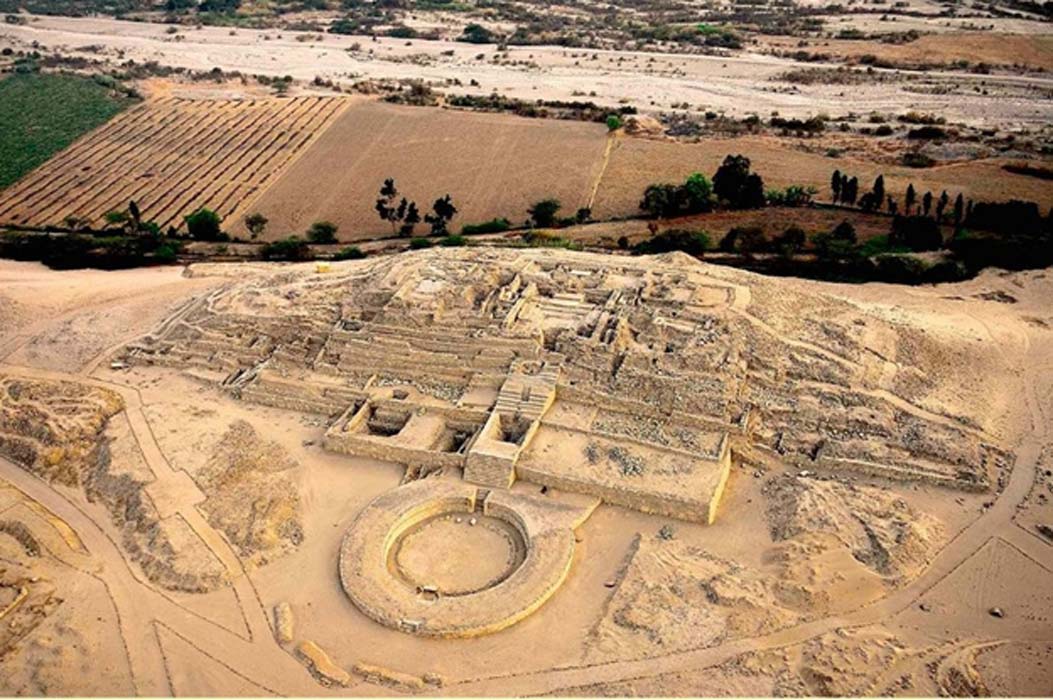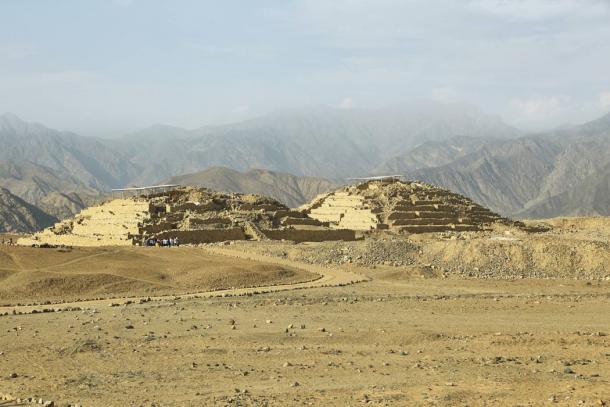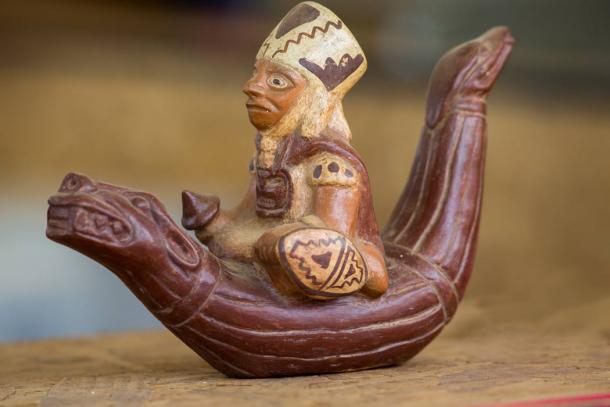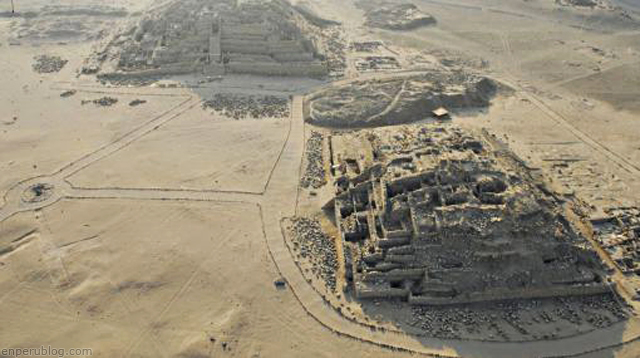Latin America
Related: About this forumWell worth the time reading, for anyone unacquainted with ancient (3,000 B.C.) S.American societies.
I just stumbled across this and have to share it with anyone who hasn't read much on Andean prehistoric complex cultures in the Americans which have ALWAYS been ignored in general by general U.S. American interest:
Norte Chico civilization
The Norte Chico civilization (also Caral or Caral-Supe civilization)[NB 1] was a complex pre-Columbian-era society that included as many as thirty major population centers in what is now the Norte Chico region of north-central coastal Peru. The civilization flourished between the fourth and second millennia BC, with the formation of the first city generally dated to around 3500 BC, at Huaricanga, in the Fortaleza area.[1] It is from 3100 BC onward that large-scale human settlement and communal construction become clearly apparent,[2] which lasted until a period of decline around 1800 BC.[3] Since the early 21st century, it has been established as the oldest-known civilization in the Americas.
This civilization flourished along three rivers, the Fortaleza, the Pativilca, and the Supe. These river valleys each have large clusters of sites. Further south, there are several associated sites along the Huaura River.[4] The alternative name, Caral-Supe, is derived from the city of Caral[5] in the Supe Valley, a large and well-studied Norte Chico site. Complex society in Norte Chico arose a millennium after Sumer in Mesopotamia, was contemporaneous with the Egyptian pyramids, and predated the Mesoamerican Olmec by nearly two millennia.
In archaeological nomenclature, Norte Chico is a pre-ceramic culture of the pre-Columbian Late Archaic; it completely lacked ceramics and apparently had almost no visual art. The most impressive achievement of the civilization was its monumental architecture, including large earthwork platform mounds and sunken circular plazas. Archaeological evidence suggests use of textile technology and, possibly, the worship of common god symbols, both of which recur in pre-Columbian Andean cultures. Sophisticated government is assumed to have been required to manage the ancient Norte Chico. Questions remain over its organization, particularly the influence of food resources on politics.
Archaeologists have been aware of ancient sites in the area since at least the 1940s; early work occurred at Aspero on the coast, a site identified as early as 1905,[6] and later at Caral further inland. In the late 1990s, Peruvian archaeologists, led by Ruth Shady, provided the first extensive documentation of the civilization with work at Caral.[7] A 2001 paper in Science, providing a survey of the Caral research,[8] and a 2004 article in Nature, describing fieldwork and radiocarbon dating across a wider area,[2] revealed Norte Chico's full significance and led to widespread interest.[9]
More:
https://en.wikipedia.org/wiki/Norte_Chico_civilization
Remnants of the cultures:
![]()
To Build An Empire, Hold The Anchovies
February 26, 201311:54 AM ET

To Build An Empire, Hold The Anchovies
February 26, 201311:54 AM ET
Megalomaniacs, consider yourselves warned. Anchovies will not help you build your empire. To rule long and prosper, serve corn.
That's the word from archaeologists who say they've solved a mystery that has been puzzling their colleagues for the past 40 years: How did some of the earliest Peruvians manage to build a robust civilization without corn — the crop that fueled other great civilizations of the Americas, like the Maya?
The Norte Chico people, who lived some 5,000 years ago, built a thriving civilization — but from the archaeological evidence previously available, it looked like they did it solely on anchovies. And anyone who has ever nibbled an anchovy on a pizza knows there's not a lot of meat on those tiny bones.
Would that have given the Norte Chico enough oomph to build the monumental architecture they left behind, including dozens of large communities with huge earthen platforms and circular ceremonial plazas, some 40 meters across?
More:
https://www.npr.org/sections/thesalt/2013/02/25/172896292/to-build-an-empire-hold-the-anchovies
~ ~ ~

9 JULY, 2019 - 17:25 DHWTY
Norte Chico: The First Civilization in the Americas?
The Norte Chico Civilization was an ancient civilization/complex society belonging to the Pre-Columbian era. This civilization flourished in Peru about 5000 years ago, and is believed to be the oldest known civilization to have existed in the Americas.
The Norte Chico Civilization is notable today for its monumental constructions, including massive ceremonial pyramids and complex irrigation systems. This ancient civilization lasted until around 1800 BC, after which the settlements were abandoned.
Located north of Lima, Peru, the Caral-Supe settlement was the ancient home of the Norte Chico people, a civilization almost as old as the Egyptians.
Courtesy of Chris Kleihege

Pyramids at Caral, Supe Valley, Peru. ( estivillml /Adobe Stock) The complexity of the Norte
Chico Civilization may be seen in the monumental works that they left behind, especially
their ceremonial pyramids.
Location of Norte Chico Civilization Sites
The sites of the Norte Chico Civilization are situated around 200 km (124.27 miles) to the north of Lima, in what is today the Norte Chico region of north-central coastal Peru, near Supe, Barranca province. This civilization is also known as the Caral / Caral-Supe Civilization, as its best-studied site is Caral in the Supe Valley.
Based on radiocarbon dating, it has been suggested that the formative period of the Norte Chico Civilization was sometime during the 4th millennium BC. The civilization’s greatest period of expansion, however, belongs to the 3rd millennium BC.
The dating of the Norte Chico Civilization shows that these inland sites were developing around the same time as their coastal neighbors. This is important, as it challenges the conventional view that all early civilizations in Peru and the rest of South America began by the sea as coastal settlements.
However, a close inter-dependent relationship between the peoples of the coast and the Norte Chico Civilization also existed. Trade is believed to have been based on fish from the coast being exchanged for cotton (for the production of fishing nets) from the interior.

More:
https://www.ancient-origins.net/ancient-places-americas/norte-chico-civilization-ancient-peruvian-civilization-or-complex-society-021445
~ ~ ~
Neighbouring city of ancient Caral at risk
March 23rd, 2010
Authorities from the local district of Barranca are investigating reports that part of Era de Pando, the ruins of a city belonging to the civilisation that built the nearby capital of Caral, have been occupied by local farmers with the intent of destroying a pyramid to build a reservoir to water the crops they are planting in the ancient site’s plaza.

Just one month ago archaeologists had attempted to work in the area but were threatened with hostility by the illegal occupiers, forcing them to request protection from an as yet unresponsive police service.
The association of farmers defended their actions and intentions by stating they had acquired ownership of the land and have deeds. Authorities contest however that the archaeological site was declared national heritage in 2000, a time when there were no occupiers.
. . .
Archaeological Terrorism
Caral is not the only site under threat by illegal occupiers. The most vicious have been squatters at the Bosque de Pomac site, who are formed by heavily-armed violent locals who kill endangered species, burn down some of the last remaining tracts of dry forest, dig holes in pyramids and murder police officers attempting to enforce the law.
The site is located in the lower half of the Supe valley on the northern side of the river and at the mouth of a dry dusty gully just metres above the fertile valley floor. Its size and distribution tell us it was an urban settlement rather than any type of ceremonial centre.
Authorities, who will inspect the site tomorrow at 10am, state that other archaeological sites in the valley are also under threat. The similarly aged site of Lurihuasi is being built upon with
http://enperublog.com/2010/03/23/neighbouring-city-of-ancient-caral-at-risk/
~ ~ ~
Discover Ancient Caral – The City That Time (almost) Forgot
15 Jul, 2016
A hidden UNESCO treasure only a few hours out of Lima, Caral is an ancient citadel which predates the Incas by 4,000 years. Time may have forgotten the reputed ‘Oldest City in the New World’ for a while, but it has now rediscovered it with gusto. So come along as we explore what is, thus far, the oldest city ever discovered in the American continent.
The mere mention of ‘great ancient civilizations’ is usually enough to conjure up images of grandiose Roman amphitheatres, flamboyant Chinese dynasties, Egyptian pyramids, and awe-inspiring Greek temples. Yet what many people don’t know, is that one of the oldest civilization of modern man arose from the arid desert sands of modern-day Peru. Caral is the incredible legacy the Norte Chico culture left behind: an archaeological masterpiece which was once a bustling metropolis comprising pyramids, temples, houses, amphitheatres, and ornate plazas. In 2001, UNESCO named Caral ‘the oldest city in the Americas’, almost 1,000 years after the first signs of its existence were detected by famed German archaeologist Max Uhle. Not since 1911, when American Hiram Bingham stumbled upon mystical Machu Picchu, has a more significant discovery emerged from Latin America.
Finally open to the public and set to become one of Latin America’s foremost historical attraction, the Ancient city of Caral is a marvel not to be missed when visiting Peru.
Caral: an unrivalled discovery that boggled the scientific world
Caral wasn’t just built 4,000 years before the revered Inca city of Machu Picchu, it was also built four millennia before the great Khmer Empire’s Angkor Wat, three millennia before the Romans built their colossal Colosseum, and even half a millennia before the mighty ancient Egyptians erected their Pyramids at Giza. This ancient city is so old that no pottery has ever been found there. Ceramic had not even been invented when it was built. The mounds which we now know to be pyramids were for decades thought to be natural forming hills by previous surveyors in the early 1900s, and this is primarily the main reason why the city remained hidden for so long. Moreover, when initial carbon-dating was carried out, it was summarily disregarded. Many thought it preposterous that the site could be 4,500 years old. Well, so much for that theory.
With further testing, Caral turned out to be 500 years older than that still.
Yet it isn’t only the age of the structures at Caral that is utterly impressive. What anthropologists find most fascinating are the in-depth stories the city tells of human kind’s first attempts at creating a centralised tiered society, and developing the credo that working together for a common goal is more prosperous in the long run.
. . .

More:
https://www.chimuadventures.com/blog/2016/07/discover-ancient-caral/